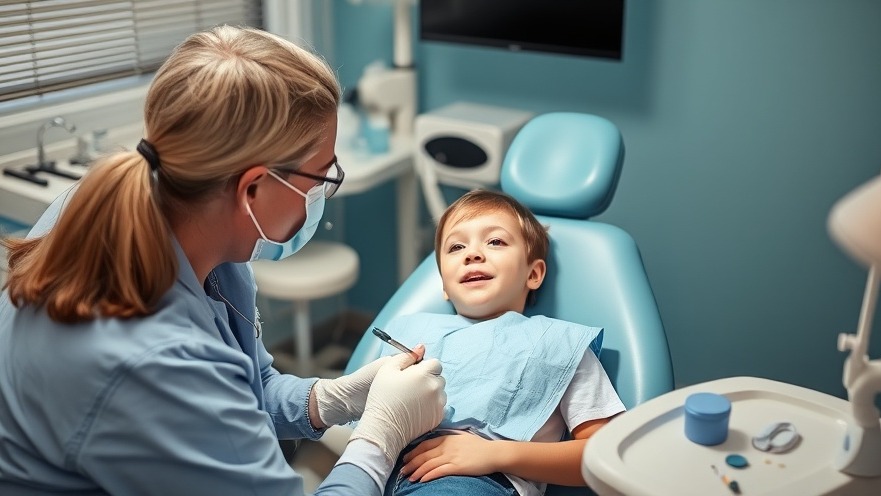
Hidden Risks in Children's Dental Care: What Parents Should Know
As parents, ensuring the health and well-being of our children is a top priority. However, a troubling issue has surfaced—one that lurks in the pediatric dental offices that many parents trust. Recent analyses have revealed concerning dangers associated with pediatric dental procedures, especially regarding analgesic use and the implications of various medications on developing bodies.
The Unseen Side Effects of Common Anesthetics
Pediatric dentists often use anesthetics during procedures to minimize discomfort. Yet, a study published in pediatric journals has flagged the extensive use of nitrous oxide and other anesthetics as a potential cause for various complications. While these methods are effective for pain management, their long-term effects on young patients, particularly those with pre-existing conditions or sensitivities, remain poorly understood. Researchers are advocating for heightened vigilance among practitioners, emphasizing the need for individual assessments before administration.
Understanding Medication Risks
Many parents may not realize that some medications prescribed in pediatric dental care, such as certain antibiotics or sedatives, could pose risks. For instance, a growing body of evidence suggests that the inappropriate use of these drugs can lead to severe side effects, particularly in young children. It's essential for parents to consult with their child's dentist about the necessity and potential dangers of these medications, ensuring they are truly needed for a child's specific treatment.
Sustainability and Health in Pediatric Dentistry
The conversation doesn't stop at medications. Environmental sustainability within pediatric dental practices is crucial too. Chemical protocols used routinely for sterilization and cleaning can pose risks, not only to patients but also to the staff and the environment. Studies have indicated a correlation between the use of certain cleaning agents and chronic health issues among dental professionals. This raises important questions about the materials and methods employed in pediatric dentistry and highlights the necessity for dental offices to adopt greener practices.
Actionable Tips for Concerned Parents
So what can concerned parents do? The first step is communication. Engage with your child’s dentist—preferably one who shows awareness of the latest research and is committed to transparent conversations about treatment options. Additionally, parents should feel empowered to seek second opinions, especially for extensive dental work.
Moreover, educate yourself about the common medications and anesthetics used in pediatric dentistry. Knowledge is power, and by understanding your child's treatment protocol, you can make more informed decisions that prioritize both effectiveness and safety.
Why This Matters: Trends in Pediatric Health
The intersection of pediatric dental care and broader health issues cannot be overlooked. As awareness grows around the impacts of environmental toxins and the overprescription of medications, it is increasingly critical for parents to stay informed. The pediatric health landscape is evolving, with research revealing the long-term consequences of treatments that were once considered routine.
Along with evolving trends, the focus on a holistic approach to health should not be forgotten. Integrating dental health with overall wellness can create a safer environment for children and foster development that is not compromised by unnecessary interventions.
Final Thoughts: The Importance of Vigilance
In conclusion, while pediatric dental care plays a crucial role in children's overall health, it comes with inherent risks that parents must be aware of. By staying informed and proactive in discussions with healthcare providers, parents can navigate these hidden dangers effectively. Awareness translates into advocacy, empowering you to make informed decisions that promote your child’s health and wellness.
To ensure the best care for your child, always consider these aspects of pediatric dentistry, and don't hesitate to demand a higher standard of care! Lead with awareness and collaboration between parents and dental professionals, creating a shield of safety for our children.
 Add Row
Add Row  Add
Add 




Write A Comment